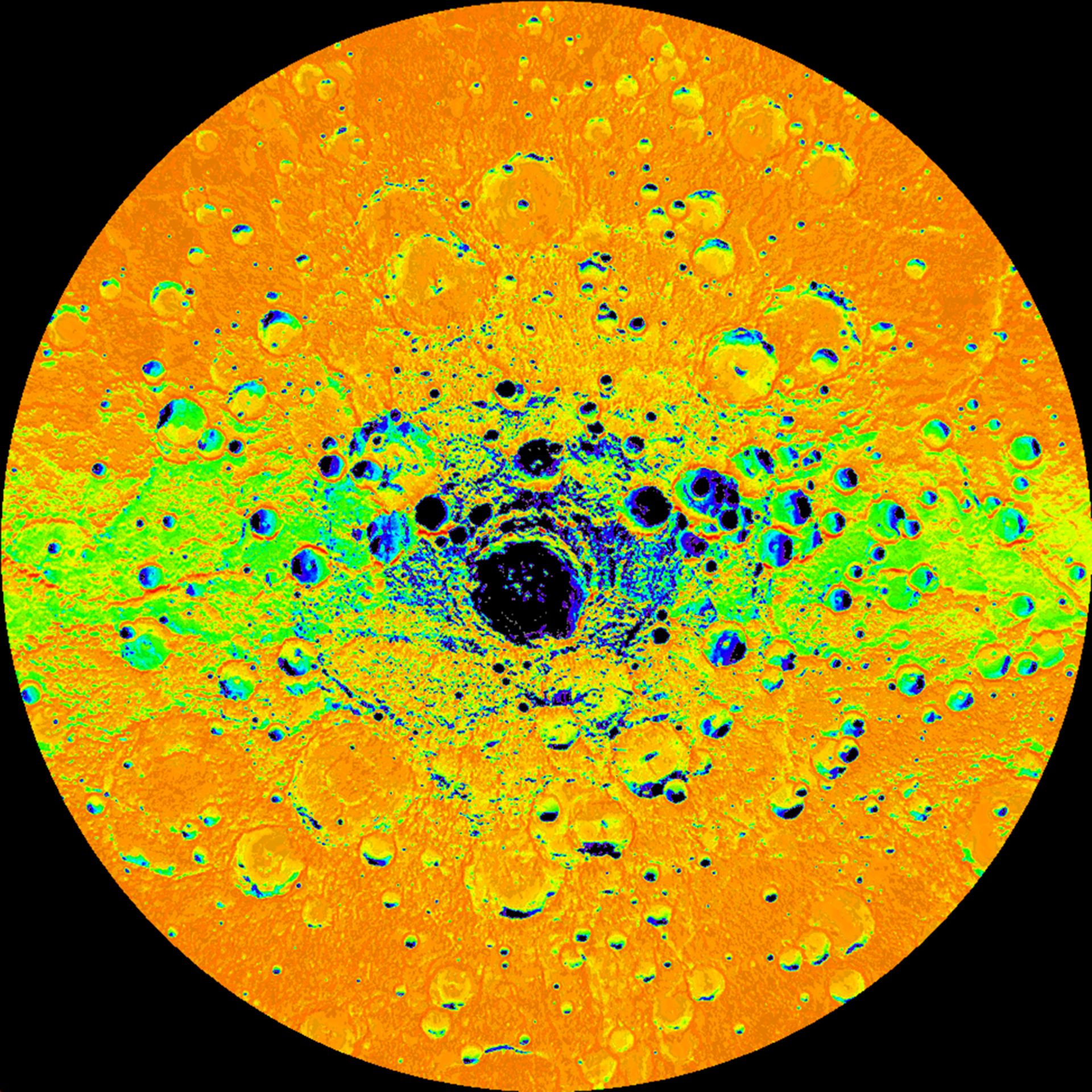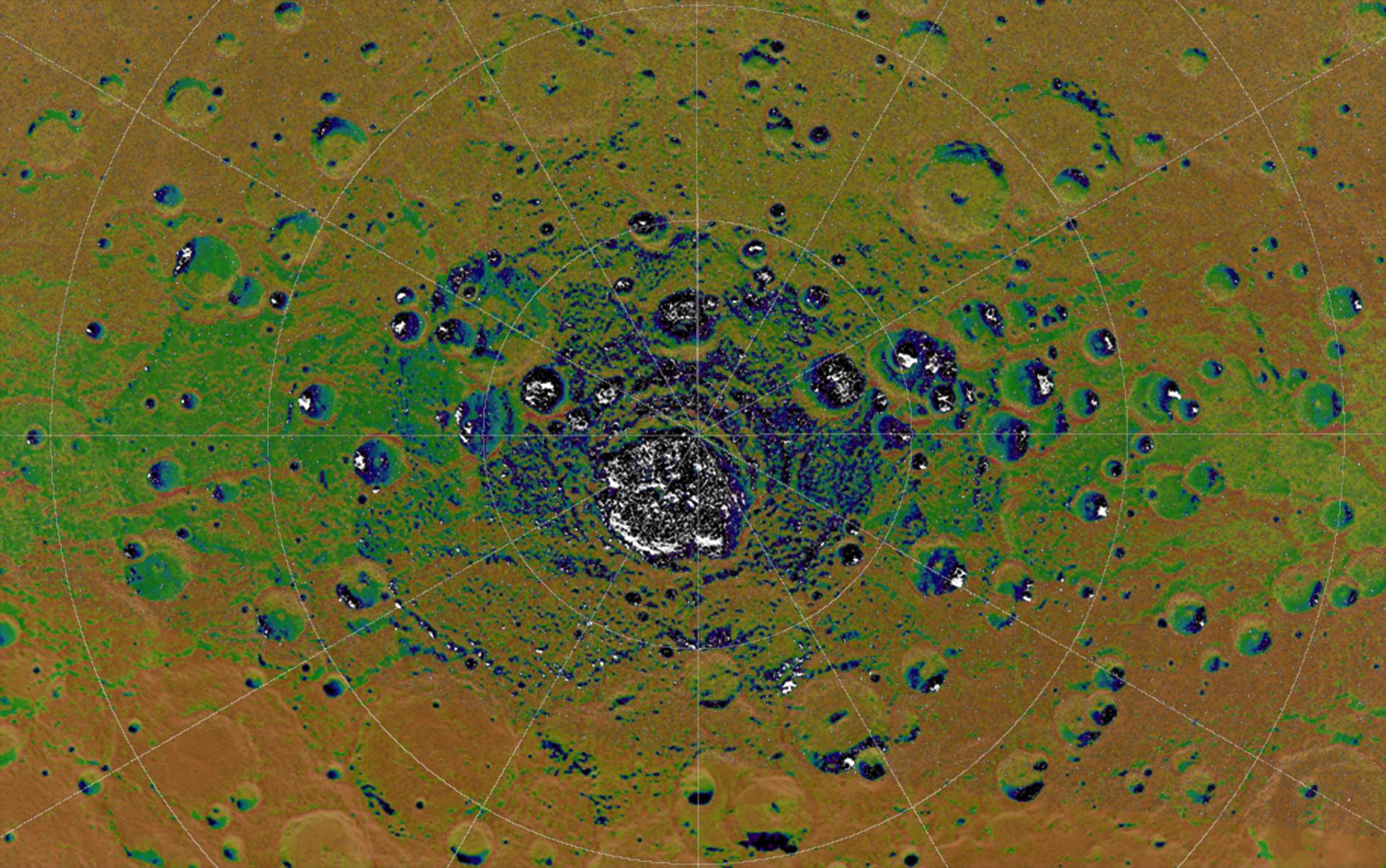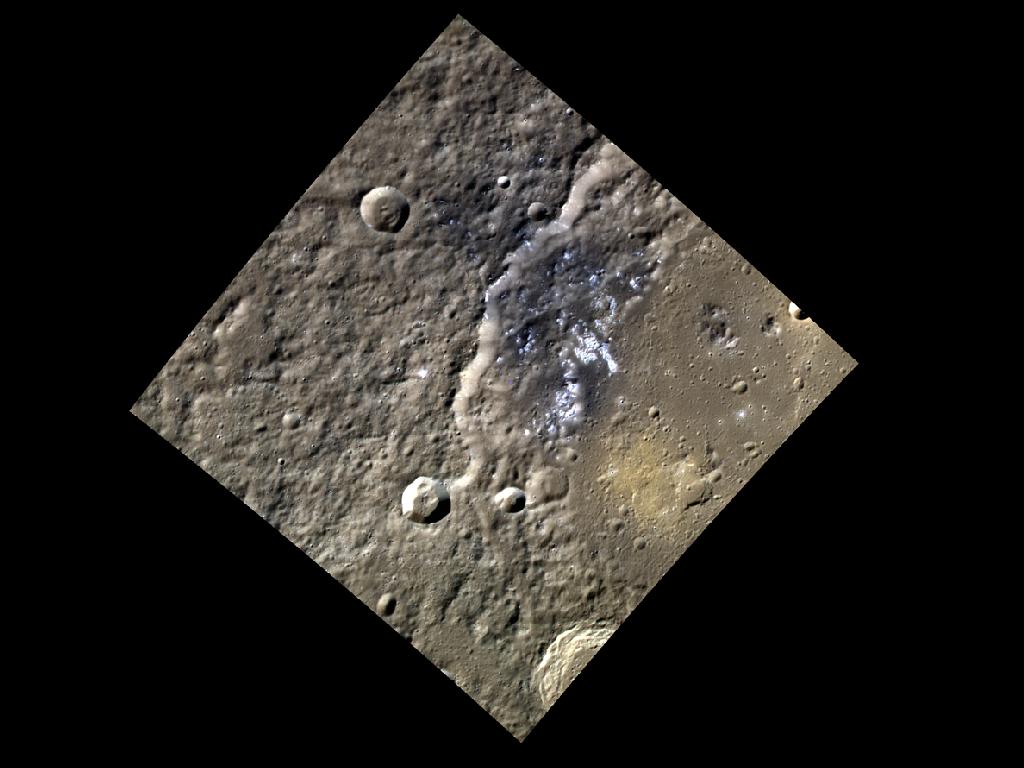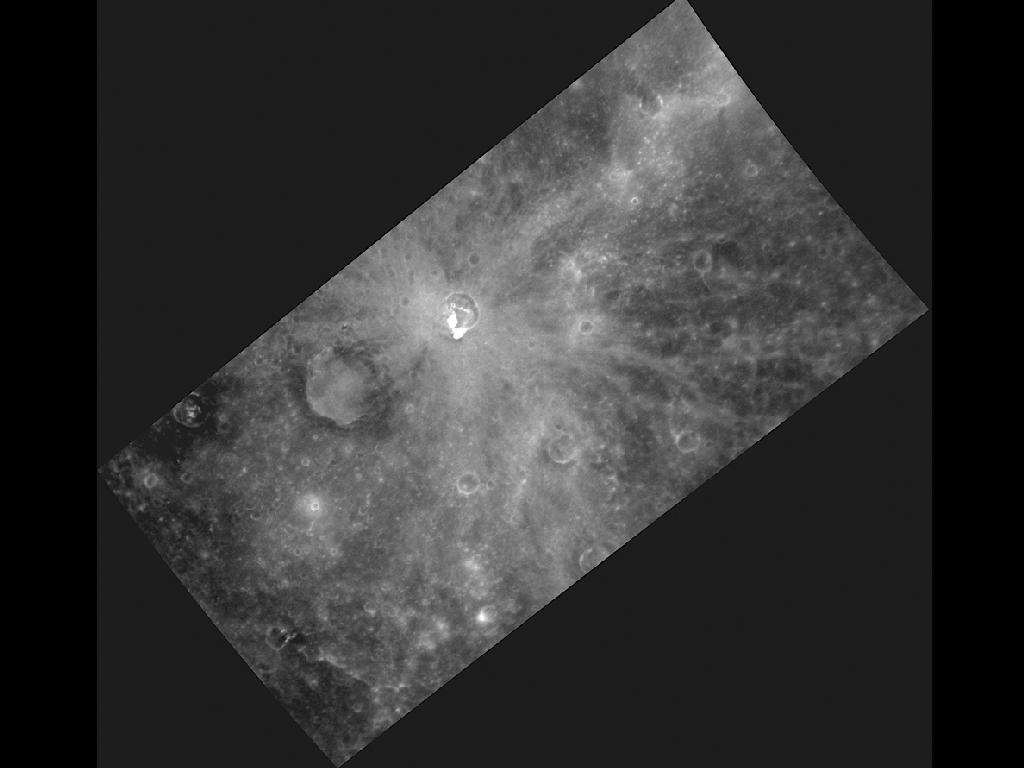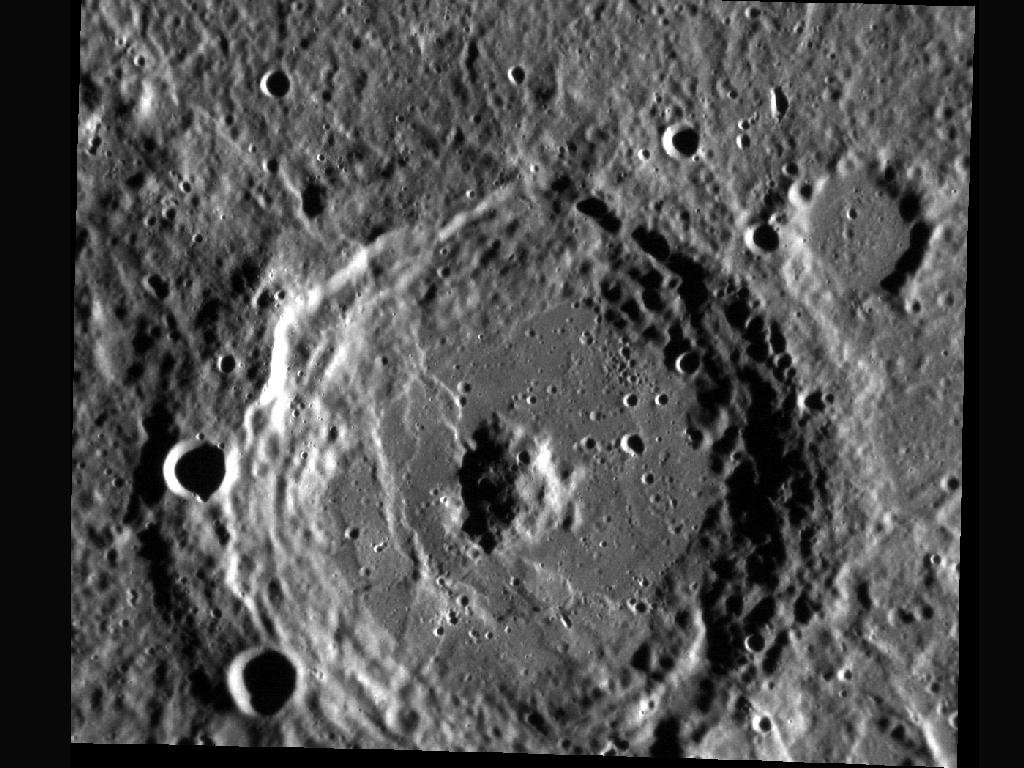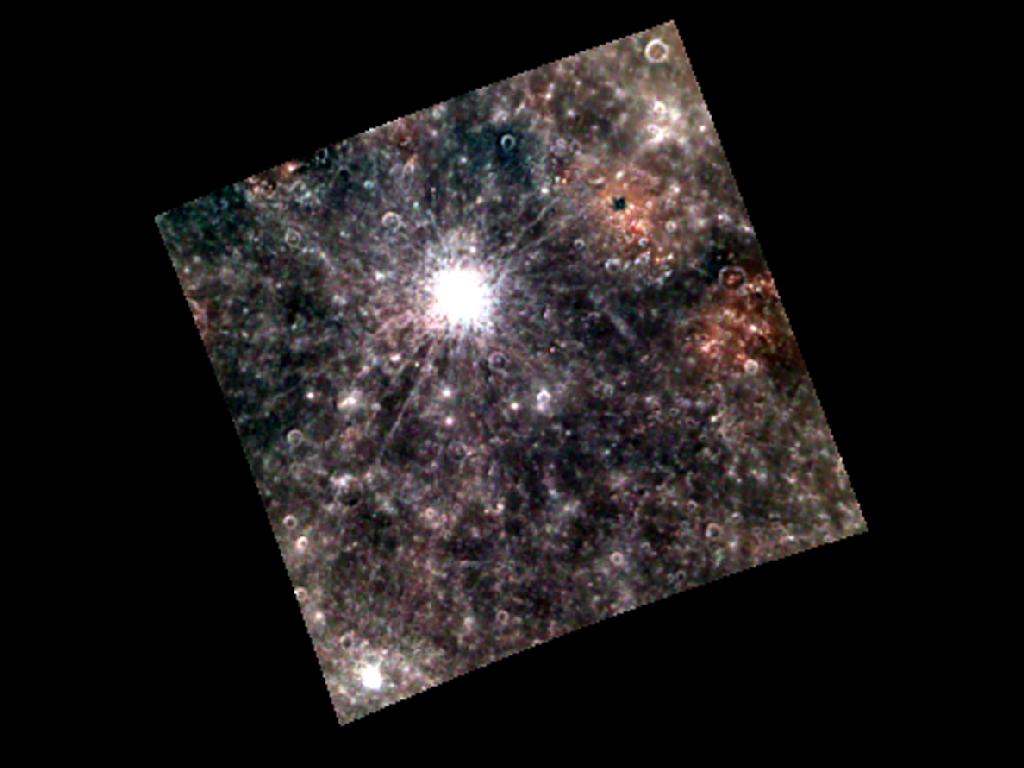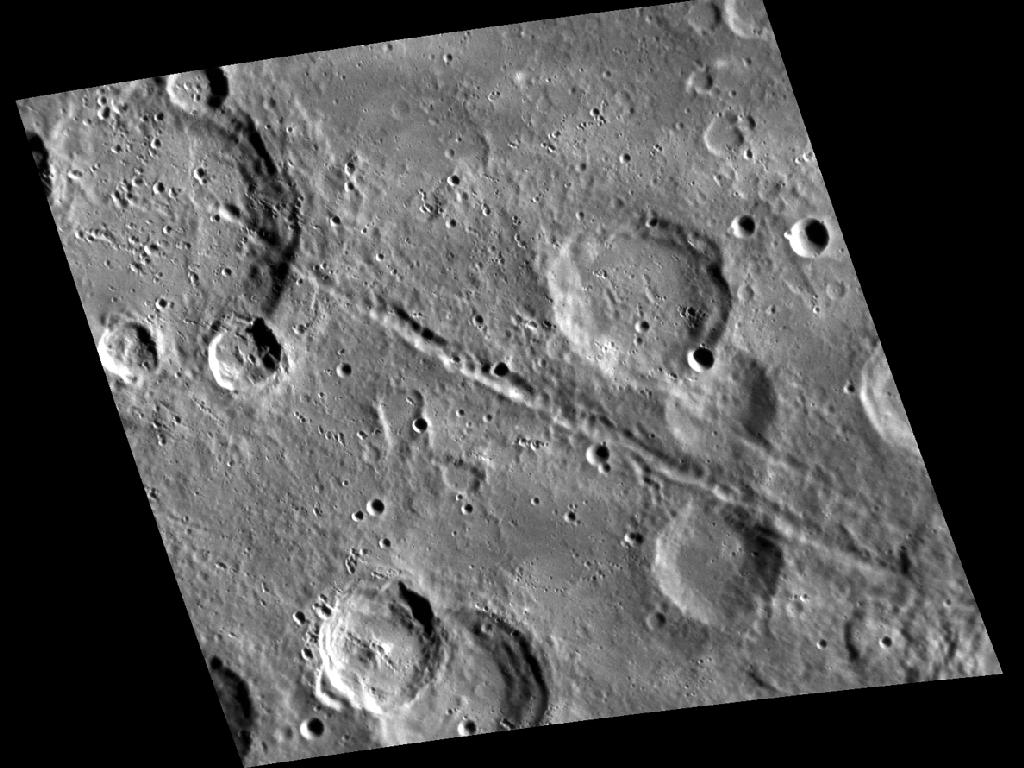Mercury Photos from NASA's Messenger Probe - Part 2 (April 2011 through 2012)
Mapping Mercury's Surface in Color
This image was taken on April 15, 2011. In addition to the surface morphology base map, MDIS is currently acquiring a color base map during the mission's first 176 days. The color base map is composed of WAC images taken through eight different narrow-band color filters and will cover more than 90% of Mercury's surface at an average resolution of 1 km/pixel (0.6 miles/pixel) or better. In contrast to the imaging conditions best suited for seeing surface topography, the highest-quality color images of Mercury's surface are obtained when both the spacecraft and the Sun are overhead and shadows are limited.
Sunlit Areas on Mercury’s South Pole
This image of Mercury’s south polar region from NASA’s Messenger probe shows a map colored on the basis of the percentage of time that a given area is sunlit; areas appearing black in the map are regions of permanent shadow.
Water Ice on Mercury
The highest-resolution radar image of Mercury’s south polar region made from the Arecibo Observatory (Harmon et al., Icarus, 211, 37-50, 2011) is shown in white on MESSENGER orbital images colorized by the illumination map. Radar-bright features in the Arecibo image all collocate with areas mapped as in permanent shadow, consistent with the proposal that radar-bright materials contain water ice.
Easy as 1-2-3!
Acquiring high-resolution 3-color images of Mercury's surface is a major mapping activity in MESSENGER's extended mission. This image was taken April 13, 2012.
The Southern Wall of Stravinsky
The structure running across the center of this image is the southern wall of the 190-kilometer diameter crater Stravinsky. This image was taken April 2, 2012.
One-two Punch
This image shows two craters that formed from impacts on Mercury's surface at a very similar location. This image was taken April 2, 2012.
Welcome to Albedo Mapping!
A new imaging campaign during MESSENGER's extended mission is acquisition of a global albedo map of Mercury's surface. This image was acquired March 29, 2012.
Breaking space news, the latest updates on rocket launches, skywatching events and more!
Well Donne
This image from the Narrow Angle Camera provides a fine view of the crater Donne. It was acquired Aug. 2, 2011.
Put on the Red Light
This image shows a color view of the southern rim of the Caloris impact basin. The prominent reddish spots are associated with irregular depressions that are thought to be volcanic vents. It was taken June 3, 2011.
I Walk the Line
This view shows a remarkable line of secondary craters, formed by a set of similar-sized blocks thrown out by the impact that formed an unnamed 150-km diameter crater, whose rim is just to the southeast of the lower right end of the crater chain. The image was acquired Jan. 20, 2012.

Space.com is the premier source of space exploration, innovation and astronomy news, chronicling (and celebrating) humanity's ongoing expansion across the final frontier. Originally founded in 1999, Space.com is, and always has been, the passion of writers and editors who are space fans and also trained journalists. Our current news team consists of Editor-in-Chief Tariq Malik; Editor Hanneke Weitering, Senior Space Writer Mike Wall; Senior Writer Meghan Bartels; Senior Writer Chelsea Gohd, Senior Writer Tereza Pultarova and Staff Writer Alexander Cox, focusing on e-commerce. Senior Producer Steve Spaleta oversees our space videos, with Diana Whitcroft as our Social Media Editor.

